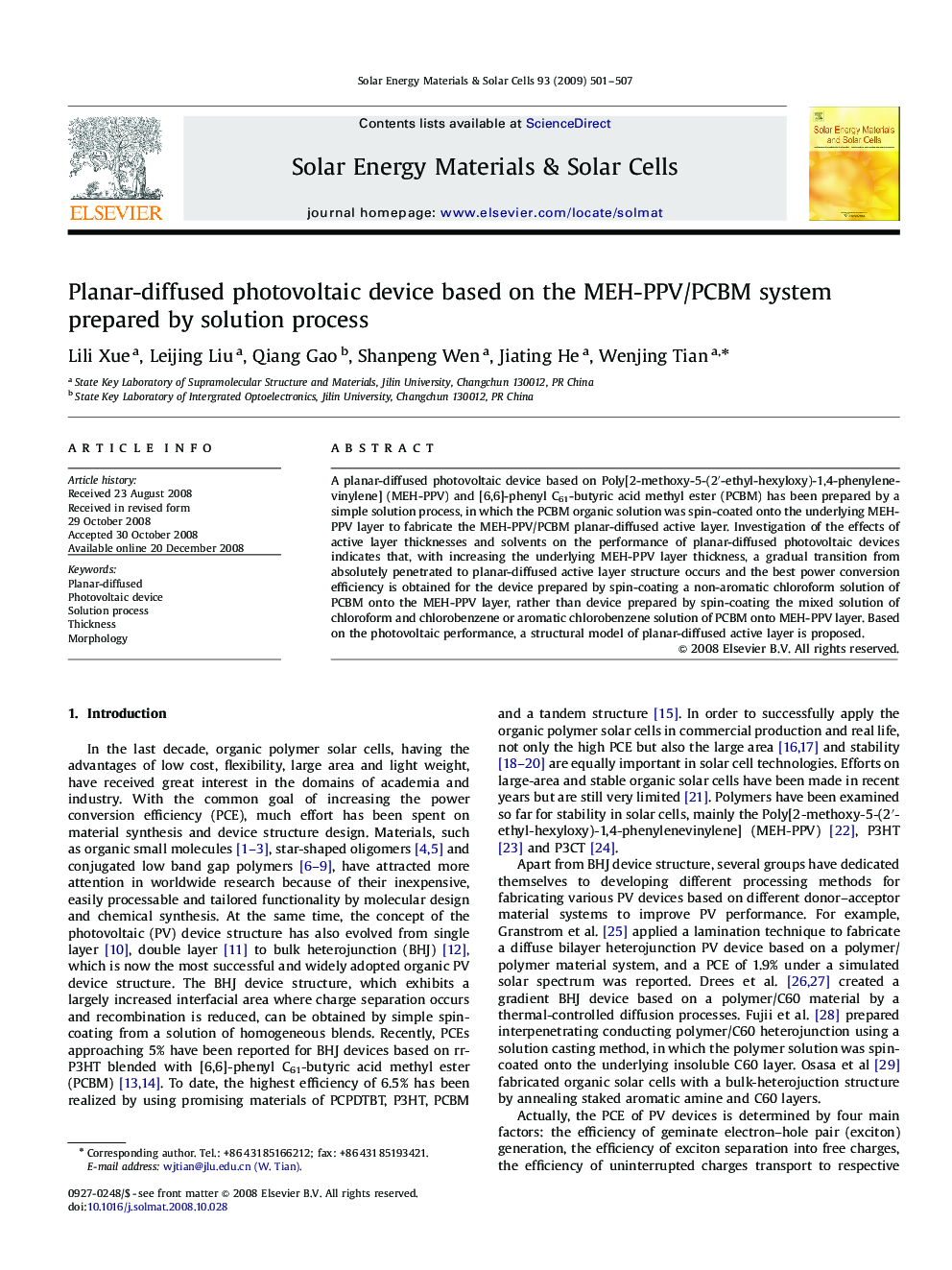| Article ID | Journal | Published Year | Pages | File Type |
|---|---|---|---|---|
| 80041 | Solar Energy Materials and Solar Cells | 2009 | 7 Pages |
A planar-diffused photovoltaic device based on Poly[2-methoxy-5-(2′-ethyl-hexyloxy)-1,4-phenylenevinylene] (MEH-PPV) and [6,6]-phenyl C61-butyric acid methyl ester (PCBM) has been prepared by a simple solution process, in which the PCBM organic solution was spin-coated onto the underlying MEH-PPV layer to fabricate the MEH-PPV/PCBM planar-diffused active layer. Investigation of the effects of active layer thicknesses and solvents on the performance of planar-diffused photovoltaic devices indicates that, with increasing the underlying MEH-PPV layer thickness, a gradual transition from absolutely penetrated to planar-diffused active layer structure occurs and the best power conversion efficiency is obtained for the device prepared by spin-coating a non-aromatic chloroform solution of PCBM onto the MEH-PPV layer, rather than device prepared by spin-coating the mixed solution of chloroform and chlorobenzene or aromatic chlorobenzene solution of PCBM onto MEH-PPV layer. Based on the photovoltaic performance, a structural model of planar-diffused active layer is proposed.
